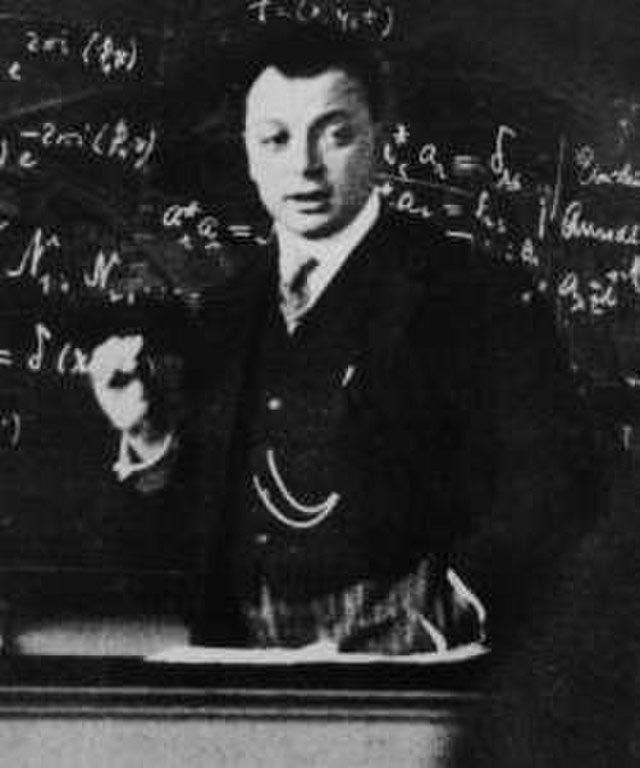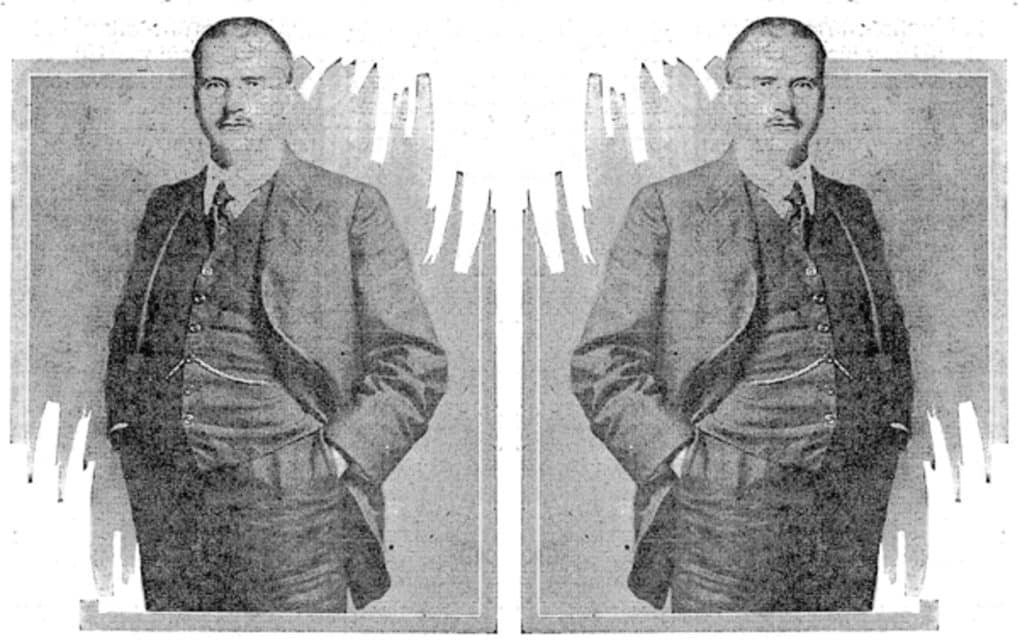Carl Gustav Jung, born in Switzerland, eventually became a world-famous founder of analytical psychology, a branch of discipline focusing on the inner life of humans to help understand their way of thinking and any possible issues they face. His approach, aimed at a deep understanding of the human psyche and how unconscious processes affect behavior, had a significant impact on the development of contemporary psychotherapy and depth psychology.
Therefore, it should not be surprising that Jung himself was an extremely complex figure. His life and academic career were a continuous journey in search of knowledge about himself and human nature.
We invite you to delve into interesting facts from this fascinating journey, which shed light on lesser-known aspects of his life and work.

1. Jung introduced the concepts of “introvert” and “extrovert” jung psychological types

Carl Gustav Jung, by introducing the concepts of “introvert” and “extrovert” in his groundbreaking work “Psychological Types” from 1921, initiated a new way of thinking about individual differences in psychology. Jungian personality types are based on preferences, where psychic energy is directed and how it is utilized. For Jung, the key factor distinguishing introverts from extroverts is the direction of their energetic interest – introverts are oriented inward, towards their own thoughts and feelings, while extroverts are oriented towards the external world and interactions with other people.
Jung described that introverts draw their energy from time spent alone or in concentration, finding satisfaction in solitary contemplation and reflection. Their propensity for introspection may make them appear shy or withdrawn to outsiders, but such a stance is for them a way to regenerate strength and maintain internal balance.
Extroverts, in contrast to introverts, seek stimulation in the world around them. They prefer activity and engaging in a wide range of social interactions, drawing energy and inspiration from them. They are open to new experiences and are often seen as sociable and full of life. For extroverts, interacting with other people and engaging in external activities is a natural way to renew psychic energy.
Despite this division, Jung emphasized that no one is completely an introvert or an extrovert. In fact, most people possess traits of both types, though usually one side dominates over the other. Jung believed that understanding one’s personality type is crucial for personal development and self-realization, as it allows for a better understanding of one’s natural tendencies and way of interacting with the world.
Jung’s concept of personality types became the foundation for many contemporary personality assessment tools, including the popular Myers-Briggs Type Indicator, and his theories on introversion and extroversion continue to play a central role in psychological research on individual differences.
2. Jung wrote a book on UFOs

In 1959, Carl Gustav Jung published a work titled “Flying Saucers: A Modern Myth of Things Seen in the Skies,” which surprised many with its subject matter. This book represented a bold and innovative approach to the UFO phenomenon, which at the time aroused widespread public interest and was the subject of numerous speculations. Instead of joining the debate on the physical reality of flying saucers, Jung chose to explore this phenomenon from a psychological perspective, analyzing it as a reflection of deep unconscious processes occurring in the human psyche.
Jung interpreted the fascination with UFOs not as evidence of extraterrestrial civilizations but as a manifestation of contemporary myths and archetypes shaping human unconsciousness. In his view, flying saucers had become a modern symbol of the unknown and unexplained, reflecting human aspiration to understand the universe and our anxieties and hopes for the future. Jung argued that interest in UFOs and aliens reflects a deep human need to seek meaning beyond the known world and can serve as a means to explore one’s own psyche.
This work also highlighted how contemporary societies project their own anxieties, desires, and aspirations onto phenomena that seem to go beyond rational understanding, suggesting that such projections can serve a compensatory function in the face of the limitations of our everyday reality. Jung noted that in the face of rapid technological and scientific changes, people often turn away from traditional religious and spiritual systems in search of new forms of expressing universal longings for the transcendent.
“Flying Saucers: A Modern Myth of Things Seen in the Skies” is thus not so much a study of extraterrestrial life as it is a deep analysis of the human psyche and the ways in which people cope with the unknown. This book confirms Jung as a thinker who was not afraid to engage in dialogue with the most surprising and incomprehensible aspects of human experience, using them as an opportunity for profound reflection on the nature of the human psyche.
3. Collaborated with Nobel Laureate Physicist Wolfgang Pauli

Carl Gustav Jung and Wolfgang Pauli, a Nobel laureate and distinguished theoretical physicist, embarked on a collaboration that at first glance might seem unexpected due to their differing fields of study. Pauli, best known for his work on quantum theory and the introduction of the neutrino concept, became interested in Jung’s depth psychology, which resulted in one of the most fascinating interdisciplinary collaborations in the history of science.
Their collaboration began in the 1930s, when Pauli sought Jung’s help in relation to personal crises and dreams he considered significant. This interest in dreams and their analysis became the starting point for a deeper discussion about the nature of reality, combining psychological with physical perspectives. Jung and Pauli conducted an intense correspondence, exchanging ideas and reflections on the relationships between the psyche and matter, which was reflected in the works of both scholars.
The fruits of this collaboration were particularly visible in Jung’s development of the theory of synchronicity. Synchronicity, defined as a meaningful coincidence that cannot be explained by traditional concepts of causality, gained significance thanks to the interdisciplinary dialogue with Pauli. Jung proposed that certain events could be connected not by cause and effect but by their meaning, which was revolutionary for both psychology and the understanding of quantum phenomena in physics.
This collaboration also influenced Pauli’s work, who explored psychological ideas in the context of quantum physics, suggesting that the observer and the observed system are deeply interconnected not only on an experimental level but also theoretically. The correspondence between Jung and Pauli, which lasted for many years, is recognized as a key contribution to the development of ideas that transcend the boundaries of traditional scientific disciplines, showing how deep questions about human psyche and fundamental laws governing matter can be intertwined.
As a result, their collaboration is one of the most significant examples of interdisciplinary dialogue in the 20th century, demonstrating that the quest for understanding reality requires collaboration beyond the boundaries of individual fields of science.
4. Speculated on Occultism
Carl Gustav Jung’s interest in occultism and paranormal phenomena was part of his broader research into the unconscious and archetypes. The relationship with Wolfgang Pauli, which evolved into a deep intellectual friendship over time, allowed both scholars to explore topics at the border of science and metaphysics. Their dialogues, often taking place in Jung’s picturesque residence by Lake Zurich, covered a wide range of topics, from quantum physics to depth psychology, as well as considerations on occultism and paranormal phenomena.
Jung, who had been studying psychic phenomena for many years, believed that occultism and paranormal phenomena could provide valuable insights into unconscious psychic processes. He was convinced that such phenomena, though often discredited by mainstream science, could play a key role in understanding the deeper layers of the human psyche. His interest in synchronicity, or meaningful coincidences that seem to transcend statistical probability, was partly inspired by these considerations.
Collaborating with Pauli broadened Jung’s perspective, incorporating not only traditional areas of occultism but also modern phenomena such as UFOs, which Jung interpreted as manifestations of contemporary myths and archetypes. Conversations with Pauli helped Jung understand how ancient and new forms of spirituality and metaphysical interests could be manifestations of deep psychic processes seeking expression in culture and people’s personal experiences.
It’s important to emphasize that while Jung was interested in occultism and phenomena considered paranormal, he approached them with scientific curiosity, aiming to understand their impact and significance for the human psyche. His approach was always focused on seeking a deeper understanding of human nature, rather than uncritically accepting any claim or phenomenon as literal truth.
Thus, Jung’s exploration of occultism and his dialogues with Pauli on the subject were part of a larger intellectual project aimed at exploring the limits of human knowledge and understanding the complexity of the human psyche.
5. Believed He Was Two People

Carl Gustav Jung, delving into the depths of the human psyche, came to believe that within his inner world existed two distinct entities, which he himself named Person Number 1 and Person Number 2. This fascinating concept was a reflection of his profound introspection and became a key element in the development of his psychological theories. Person Number 1, as he described, represented his external self, shaped by education, life experiences, and societal and parental expectations. This was the person the world knew – Jung as a son of his parents, a doctor, scientist, teacher, and social activist.
On the other hand, Person Number 2 represented his inner, deeply personal self, free from external influences and societal constructs. This part of himself was, for Jung, the source of intuition, spiritual experiences, and a deep sense of connection with universal existential truths. Jung believed that Person Number 2 had access to universal wisdom and was in contact with unconscious layers of the psyche that transcended his personal experience.
The distinction between these two “persons” allowed Jung to explore the dynamics between the conscious “I” and the deeper, unconscious “Self”. This led to the development of his theory of the ego and the Self as two fundamental aspects of the psyche. The ego, in Jung’s understanding, referred to the conscious part of the personality, responsible for the sense of identity and the continuity of experience. The Self, on the other hand, represented a more integrated, whole, and complex sense of self, encompassing both conscious and unconscious aspects of the psyche.
Jung’s concept of two “persons” within a single individual was groundbreaking because it emphasized the importance of unconscious processes and inner work in the pursuit of psychological wholeness and health. It highlighted how crucial it is to harmoniously integrate different aspects of our psyche to achieve a fullness of psychic and spiritual life. In this way, Jung made a significant contribution to the understanding of the nature of the human psyche and personal development.
6. Wife and Children

Carl Jung met Emma Rauschenbach when she was 16 and he was 21. She came from an old Swiss-German family, primarily composed of affluent industrial workers. The wealth of her family gave Jung the opportunity to dedicate himself to his interests and dreams with financial freedom. They married on February 14, 1903, seven years after they first met.
Emma was not only Jung’s wife but also became his close collaborator in research on psychology. This marriage was a relationship full of challenges, both emotional and intellectual, which influenced Jung’s work. The couple had five children:
- Agathe Niehus (née Jung) born December 28, 1904 – Agathe, the eldest daughter, was interested in her father’s work, though not in the same way as her mother. She was primarily focused on family and private life, not directly engaging in the development of analytical psychology.
- Gret Baumann (née Jung) born February 8, 1906 – Like her older sister, Gret also did not engage professionally in her father’s work. She focused on family life.
- Franz Jung born November 28, 1908 – About Franz, the only son of Carl Gustav Jung, relatively little is known in the public or scientific context. There is no information that he continued his father’s research in any direct way.
- Marianne Niehus (née Jung) born September 20, 1910 – Marianne, like her siblings, was not publicly known for directly continuing her father’s work. Her life and interests remained more private.
- Helene Hoerni (née Jung) born March 18, 1914 – Helene, the youngest sibling, also did not significantly engage in analytical psychology or her father’s intellectual legacy in a way that was widely recognized.

Emma Jung was interested in psychoanalysis and greatly supported her husband’s work, including conducting her own research on the significance of fairy tales. Their home in Küsnacht, near Zurich, became a meeting place for many distinguished thinkers and practitioners related to psychoanalysis and analytical psychology. Emma died on November 27, 1955, at the age of 73. Mourning her, Carl stated, “She was the foundation of my house,” and that “She was the Queen!”
“Where love rules, there is no will to power, and where power dominates, there love is lacking. The one is the shadow of the other.” – Carl Gustav Jung
Bibliography
- Jung, Carl Gustav; Marie-Luise von Franz (1964). Man and His Symbols. Doubleday. ISBN 8449301610.
- Carl Gustav Jung, Analytical Psychology: Its Theory and Practice (The Tavistock Lectures), (Ark Paperbacks), 1990, ISBN 0-7448-0056-0
- Anthony Stevens, Jung. A Very Short Introduction, Oxford University Press, Oxford, 1994, ISBN 0-19-285458-5
- Anthony Stevens, On Jung, Princeton University Press, 1990 (1999).
- The Basic Writings of C.G. Jung, edited by V.S. de Laszlo (The Modern Library, 1959)
- The Portable Jung, edited by Joseph Campbell (Viking Portable), ISBN 0-14-015070-6





